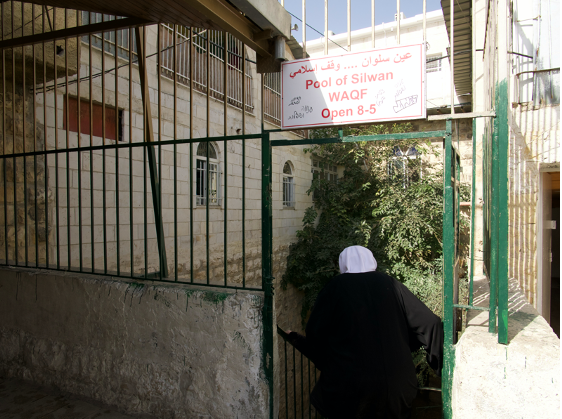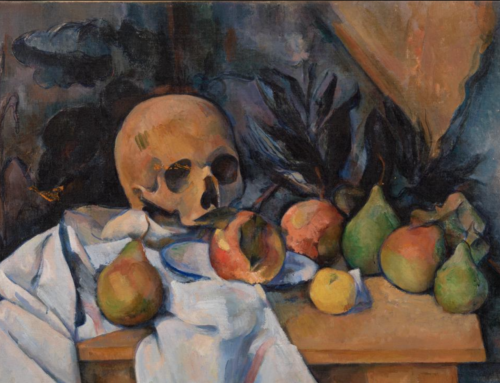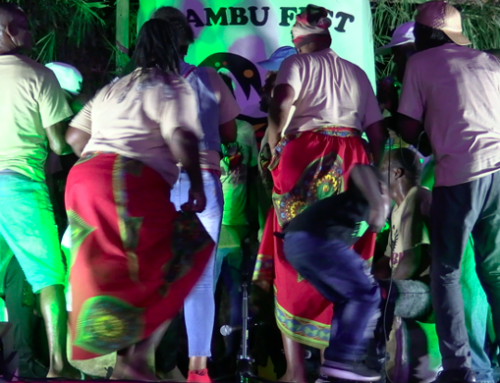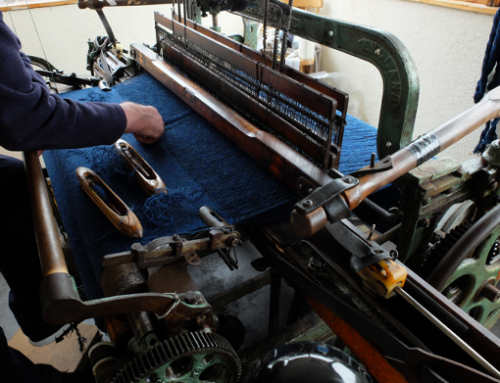Every Wednesday during my first winter in Jerusalem, I met with Umm Atef, Umm Abed, and Umm Ali to visit the places of water in the village of Silwan, their home. Tala, my research assistant, helped to translate. We walked down narrow alleys, past Palestinian homes with rugs airing in the sun, and Israeli settler compounds overlooked by armed guards. Our first stop was ‘Ayn Silwan, or the spring of Silwan. To reach it, we passed the City of David archaeological and tourist site that controls most entrances to the spring, and whose backer, Elad, is an Israeli private organization whose objective is to strengthen settlements in East Jerusalem. Between the gaps of fences, Umm Ali would name each plant, Umm Atef might pluck a lemon for us to taste, or Umm Abed would pick a sprig of maramīa (East Mediterranean sage), guiding me to take in its scent. Under the shade near each site where the spring water surfaces to the ground, we would eat pickles, labne, and ma’amoul (date cookies), freshly made. On our first walk, Umm Atef and Umm Ali beckoned me to join them in the ‘Ayn Silwan pool, to dip our feet into the cool clear water.
During each of our walks, Umm Atef, Umm Abed, and Umm Ali shared stories from the past; mouth-watering orchard harvests nourished by the spring and shared family plots over generations, picnics like ours from years ago. Umm Abed would talk about how her father brought her to Silwan’s gardens before they became concrete builds, and how her son’s skin was healed from the Silwan pool. These relations with water are defined by an expansive care: through healing, watering, flourishing, cleaning, sharing. Now, when I travel back from my London home to see Umm Ali, Umm Abed, and Umm Atef, they tell me about their latest trip with their children to show them that the spring is theirs, and try to convince friends who are afraid of the Israeli settlers to join them next time.
‘Ayn Silwan lies at the heart of Silwan, a village in occupied East Jerusalem, whose topography and tempo reflect the occupation at large. Daily rhythms follow and refuse the contours of political violence (Peteet 2018). Palestinian Jerusalemites of Silwan live as permanent residents with the minimal rights of the Jerusalem ID–a precarious status with origins in the annexation of East Jerusalem in 1967, which every resident must renew every five years (Abu Hatoum 2021). Since Elad was founded in 1987, Palestinian expulsion and settler presence is especially concentrated in Silwan. Today, families in the al-Bustan area fight uncertain futures with a decades-long legal battle against Israeli authorities, Elad, and its partner organization Ateret Cohanim, where homes face threats of demolition and forced eviction, in favor of urban plans which seek to rebuild the biblical garden of King David in their stead (Sabbagh 2022). As an extension of Israeli tactics to take over Palestinian land, visions such as these justify Palestinian dispossession and displacement with narratives drawn from the politicization and revision of history (El-Haj 2001; Pappé 2007).
Chronologies of refusal and control also run through the waters of Silwan. The passages of pools and rock hewn channels of ‘Ayn Silwan are attractions designed to guide tourists through archaeological feats of engineering and mythological marvels from the past. Only one site exists as a public space for Palestinian Jerusalemites, whose families still remember the village life that the spring enabled just a generation ago. The water that flows through kitchen taps is made by the Mekorot, the national Israeli carrier founded before 1948. Its pipelines circulate a product composed from desalination plants on the Mediterranean Sea, freshwater from the Lake Tiberias or Kinneret, and extractions from the Mountain Aquifer, a geological formation under West Bank grounds. Water technologies developed by start-ups in Tel Aviv are exported with claims to solve an impending global water crisis. Israeli forces weaponize water, and NGOs herald its potential as a site for peace (Trottier and Brooks 2013; Zeitoun 2008).
These rhythms of water craft time. I stay with them in this piece to consider the particular charge that the present takes as it shapes and constrains the possibilities for life under political violence. I began to write this article in the spring of this past year, based on my research which followed water in Jerusalem between 2019 and 2021. I revise and rewrite now, in the winter of 2023, while the present in Israel/Palestine shudders under the weight of monumental loss; as daily existence in Gaza is shaped by Israeli rockets, blockades, and acts of care amidst the devastation; as my Palestinian friends in East Jerusalem follow the dehumanization and destruction on television screens and fear the soldiers and settlers on the streets;as my Jewish friends in West Jerusalem reel in grief from the Hamas attacks of October 7, 2023. The present is a live topic; Palestinian scholars urge for accountability now, not once events are in the past (Eghbariah 2023); the ongoing Nakba is evidenced with daily footage; horrors unfold from the war’s start in real-time. The present tense that I write of here appears away from these extremes. Yet it folds them into quiet quotidian moments, to show how political violence both creates and is created by time—so that its effects persist, even when its events do not reach the global news.
For this, I return to Silwan and the spring. Over the months, I notice how the rhythm of our visits forms a pattern. Each visit takes a familiar shape, repeating past arcs, with a walk and a feast enlivened by the smell of fruit, the feel of a body submerged, the sound of water. Each time, the present becomes charged with a sensorial refrain that is deeply known. This is a particular kind of present tense, which creates political effects. A visit to ‘Ayn Silwan is an act of resistance against displacement and dispossession, drawn from what the women know. I see a kinship with the work of Ruba Salih and Olaf Corry (2021), who describe the travels of Palestinian families to commemorate destroyed villages, in acts which revitalize past ecological relations and challenge ongoing colonial erasure. In Silwan, every visit marks the continual presence of Palestinian life and ancestral relations with water, with a repeated claim of rootedness to a local village through care.

A walk to ‘Ayn Silwan, the spring of Silwan. November 13, 2019. Photo by author.
When I met with Umm Atef, Umm Abed, and Umm Ali earlier this year, I spoke with them about this temporal work. Heads nodded in our wider group, as we talked about how these acts bring the past to life in new embodied forms, making them potential futures; how they locate the possibility of liberation in tiny glimmers of pleasure located in a pool or tree, even as they are felt together with the pain of life under occupation. Other places of water in Silwan are less recognizable—Bīr Ayūb, or Job’s Well, is covered by a concrete block, ‘Ayn al-Lawz, or the spring of the almond, is filled with trash. ‘Ayn Silwan is the closest to past memory. If visits there invoke a past that is romanticized, it is with a deliberate choice to frame the present. As the women choose to share this present tense with me, I have also come to see that it holds a politics of solidarity. Against the dominant grain of advocacy which relies on narratives of suffering (Fassin 2008), with repeated visits to the spring, Umm Atef, Umm Abed, and Umm Ali show me the necessity of freedom not just through the condition of its loss, but from the bittersweet sensation of how it can feel in borrowed moments.
I think of this present as a particular tense, because its tempo has a shape, with a material, affective, and political texture of its own. In the terms of grammar, a tense denotes the specific time reference of a verb, and so of action. If time here is deliberately mobilized, and if its mode of action can be understood through a temporal grammar, in Silwan the repetition of visits to the spring is a present in its continuous form. I see its movement like a spiral; a present continuous based on action that goes on, where women repeat past gestures into the present, as they always have done, and as they always will.
In a recent volume, Yael Navaro (2021) and her colleagues urge for the concepts and methodologies in the study of political violence to be recast. Against a tendency to take political violence for granted, and so essentialize its presence in certain parts of the world—like in the Middle East—they call for attention to its specificity, in its material, immaterial, and otherworldly reverberations across space and time. The present continuous tense along relations of care with the Jerusalem waters of Silwan similarly confronts the temporalities shaped by settler colonial rule. Through this tense, I want to emphasize the affective and embodied forms that temporal labor can take, to navigate and refuse political violence. Political violence molds the urgency of this temporal action, just as the rhythms of the present continuous challenge the structures of empire. Beyond resistance, they bring to life the possibility of a different present amidst the forces which seek to erase its potential. The politics and patterns of time here resonate with Deborah Thomas’ writings on the temporalities of colonialism. Grounded in the patterns of violence in the Caribbean, present, past, and future are mutually constitutive, with simultaneous action that is “fully embedded within the violences of modernity” (2016, 177). Past and future equally fold together in Jerusalem. Present action encompasses long temporalities. Articulated through taste, touch, smell, sound, and sight, it renders the present not only a temporal condition, but an affective, bodily one.
The present continuous is just one instance of the present in Jerusalem. Along different practices with water across the city, the present fractures into multiple tenses, in what I explore elsewhere as a grammar of the present (Glazer 2024). Other chronologies also animate its waters—geological formations of karstic limestone, stories of seasonal rains, the actions of jinn. They lie dormant during the horrors of extreme violence. But they will return to haunt, as the tempos of a planet in crisis continue to accelerate, and as they pose questions which remain unanswered still. If action in the present strives for Palestinian futures, what other forces must it address? What rhythms can be resuscitated for liberation for all from these saturated grounds?
References
Abu Hatoum, Nayrouz. 2021. “For ‘a No-State yet to Come’: Palestinian Urban Place-Making in Kufr Aqab, Jerusalem.”Environment and Planning E: Nature and Space 4(1): 85–108.
Eghbariah, Rabea. 2023. “The ‘Harvard Law Review’ Refused to Run This Piece About Genocide in Gaza,”’ 21 November 2023. https://www.thenation.com/article/archive/harvard-law-review-gaza-israel-genocide/.
El-Haj, Nadia Abu. 2001. Facts on the Ground: Archaeological Practice and Territorial Self-Fashioning in Israeli Society. Chicago: University of Chicago Press.
Fassin, Didier. 2008. “The Humanitarian Politics of Testimony: Subjectification through Trauma in the Israeli–Palestinian Conflict.” Cultural Anthropology 23(3): 531–58.
Glazer, Emilie. “A Grammar of the Present: Three present tenses and their tensions along relations with water in the Palestine Anthropocene.” Unpublished manuscript, last modified January 10, 2024. Microsoft Word file.
Navaro, Yael, Zerrin Özlem Biner, Alice von Bieberstein, and Seda Altuğ. 2021. Reverberations: Violence Across Time and Space. Philadelphia, Pennsylvania: University of Pennsylvania Press.
Pappé, Ilan. 2007. The Ethnic Cleansing of Palestine. Oxford: Simon and Schuster.
Peteet, Julie. 2018. “Closure’s Temporality.” South Atlantic Quarterly 117(1): 43–64.
Sabbagh, Mahdi. 2022. “Sumud: Repertoires of Resistance in Silwan.” Public Culture 34(3(98)): 495–514.
Salih, Ruba, and Olaf Corry. 2021. “Displacing the Anthropocene: Colonisation, Extinction and the Unruliness of Nature in Palestine.” Environment and Planning E: Nature and Space 5(1): 381–400.
Trottier, Julie, and David B Brooks. 2013. “Academic Tribes and Transboundary Water Management: Water in the Israeli-Palestinian Peace Process.” Science & Diplomacy 2(2): 12.
Zeitoun, Mark. 2008. Power and Water in the Middle East: The Hidden Politics of the Palestinian-Israeli Water Conflict. London: I.B.Tauris.
Emilie Glazer holds a PhD in Anthropology from University College London (UCL). Her work explores care, justice, and political violence in the changing ecologies of the climate crisis. In Israel/Palestine, her research followed water and its infrastructure in Jerusalem and beyond its borders, to trace the politics of water quality through affect, memory, and the body. She currently teaches at UCL Anthropology.
Cite As: Glazer, Emilie. 2024. “Affective Currents of the Present Tense”, In “Back to the Present” edited by Timothy P.A. Cooper, Michael Edwards & Nikita Simpson, American Ethnologist website, January 26 2024, [https://americanethnologist.org/online-content/collections/back-to-the-present/affective-currents-of-the-present-tense/]




